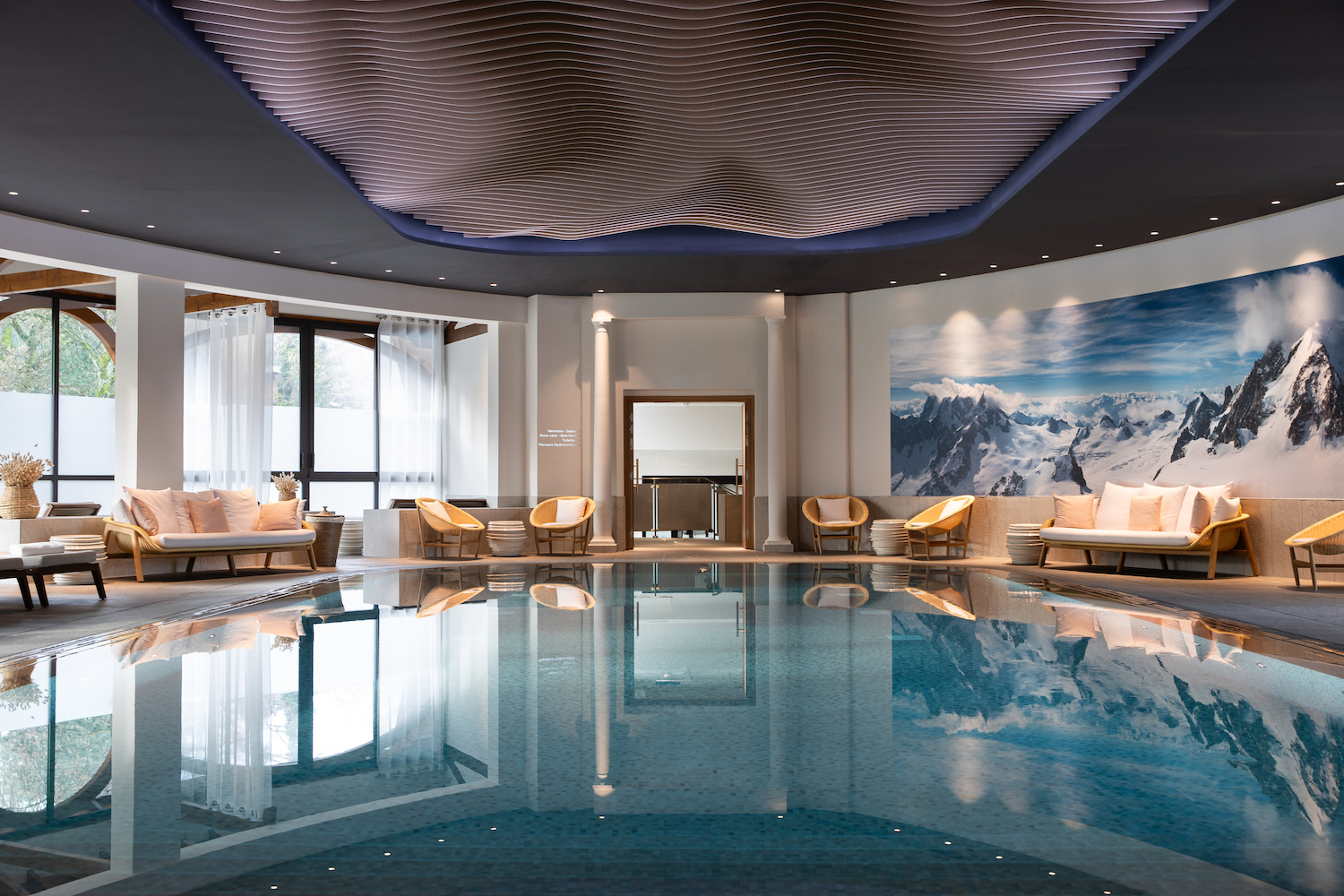
Photo Credit: Susan Kime/Jean-Michel Cousteau Resort
One area of agreement in the published 2012 affluence research is the three intrinsic dimensions of most high-end products: legacy, scarcity and worth. Legacy cuts two ways: for the vendor, it means having a great story associated with the product, for the buyer, it means having the product able to create substantial memories.

Cousteau Resort
Scarcity means, whatever the product is, there are not many of them, many are one of a kind, a reason that justifies price. And worth: the more complex, nuanced dimension—combining great design, sublimity, artistry, and that je ne sais quoi that brings satisfaction to the owner or the guest, knowing he or she has experienced something worthy, worthwhile, and worth the journey.

In the world of hospitality, most branded and boutique resorts strive to reach the high net worth consumer with a resort experience combining all the three mentioned above, but few actually are successful. One resort that combines these three, and is evolving into an even greater amalgam, is the Jean-Michel Cousteau Resort on the north island of Vanua Levu in the Fiji Island chain.

Susan Kime
It sounds so far away, but it is not as difficult to get to as some would think. Air Pacific, Qantas, Air New Zealand and others fly from Los Angeles to Nadi, the capital of Vita Levu, the South Island, and Island Hoppers, or Pacific Sun, small aircraft companies in Fiji, fly to the Savusavu airport on Vanua Levu, on the North Island, a few minutes from the Cousteau Resort. This latter trip is about an hour from Nadi to Savusavu. In all, from Los Angeles to Nadi to Savusavu is a lengthy trip, ten hours or more, but as in many long journeys, the destination compensates for the time.

Jean-Michel Cousteau, son of the famed Oceanographer Jacques-Yves Cousteau, put his name on a small resort back in the 1980s, as he saw the possibilities, even then, of evolving this place into an eco-sensitive, sustainable, resort where oceanographic education and great diving potential both could exist on Savusavu Bay, a pristine body of water with coral reefs, oyster beds, and exceptional marine life. And along with this evolution, the luxury aspect of the resort was also evolving.

The Cousteau Resort rests on a 17-acre coconut plantation, and is a group of 26 Bures (pronounced Bur-AY)—thatched roof Villas, built in the same architecturally communitarian manner as a Fijian village—close enough to know your neighbor, but far enough away not to know them that well. The high (about 20 feet) roofs provide a sense of expansiveness, and the window walls with wood plantation shutters allow guests to feel cross breezes, see the ocean, the orchid, ginger, and hibiscus gardens, and frangipani and mango trees.

Similar to the values of the Fijian community, the Bure with the highest roof has the most status. At this resort, the highest roof is that of the kitchen and dining room, as well it should be, given the flourishing organic gardens and food preparation by the chef, Raymond Lee, and his team of sous chefs and a pastry chef.

Raymond is part Fijian and part Chinese, and his multicultural heritage (he speaks Fijian, Chinese and Hindi) is reflected in his daily menus, each one different during each 14 day period. A walk through the garden with him reveals Chef Lee’s particular taste and color preferences: Japanese eggplant, chives, okra, passion fruit, mango, papaya, tomato, hot and mild chiles, and Fijian lime.

But the food and resort designs are just two of many ways where the resort pays a consistent homage to the Fijian culture that surrounds it. Most of those who work at the resort are Fijian, many come from Savusavu and from other villages on the island. They are warm, generous, call you by name, take care of the children at the special children’s club called the Bula Club and Fijian nannies are available at the resort.

An educational tour of the many medicinal plants that surround the resort is given by Pete, the Fijian Activities Director, who knows what every plant is good for ailments ranging from stomach problems to mosquito bites. Johnny Singh, the Fijian on-site, University degreed Marine Biologist, gives evening presentations on sea life, ecology, and the children’s favorite, sharks. He also takes guests snorkeling and SCUBA diving.

JHunter Pearls
Guests can also take trips to a local rainforest and swim in the rushing waterfall. They can sail to a private island near the resort or to a Mangrove forest, and be driven to the town of Savusavu, where they can again sail out to the J.Hunter oyster beds, where they can see the Oyster chaplets, and understand how and where some of the most colorful pearls in world are created, and then return to buy some. (Photo courtesy of J. Hunter Pearls)

With all that said, and with all the substantial sustainable/ocean education and Fijian culture DNA as the root system of this resort, the Cousteau resort is still in process of evolution. It was purchased in 2005 by the Canyon Equity Group, a highly specialized company whose few high end resorts reflect their vision of eco-sensitivity, and a view that the resort must have a relational, reflective and values organicity to the outside landscape. Their projects include Amangiri, at Canyon Point in Southern Utah, Amangani in Jackson, Wyoming, Dunton Hot Spings, near Cortez, Colorado, and others in Santa Fe, France and one in process in Costa Rica.

As regards the Cousteau Resort, the evolving, in-process part deals with their plans for the renovation of the Bures, with in-place pre-planning strategies for building new ones. “Many of these renovations are subtle, more infrastructure things,” said Mark Slimmer, the General Manager of the Cousteau Resort.

“For example, the lighting, some of the interior color design of the Bures, some of the wall décor. The Bures are beautiful as they are, but we feel we can further highlight the natural beauty of wood, stone, and glass. We do not have TVs or radios in the Bures, as all the guests hear now and will ever hear are sounds of nature: the waves, the wind, the rustle of the trees, the singing of the birds. That won’t change, but we may eventually build a few more Bures."

 Eventually with the building of new Bures comes a less subtle, more substantial evolution: pre-planning processes are already in place for the building of whole ownership Bures, along with the possibility of fractionalizing a few in the coming years.
Eventually with the building of new Bures comes a less subtle, more substantial evolution: pre-planning processes are already in place for the building of whole ownership Bures, along with the possibility of fractionalizing a few in the coming years.
Note: I was fortunate enough to travel to the Fiji Islands from November 11-18 of this year. Air Pacific and the Cousteau Resort were sponsors and hosts. It would have been impossible in time and travel expense for me to cover this subject, with its many nuances, on my own. But rest assured my opinions, as usual, and in my typical determined first-born way, are always my own.














